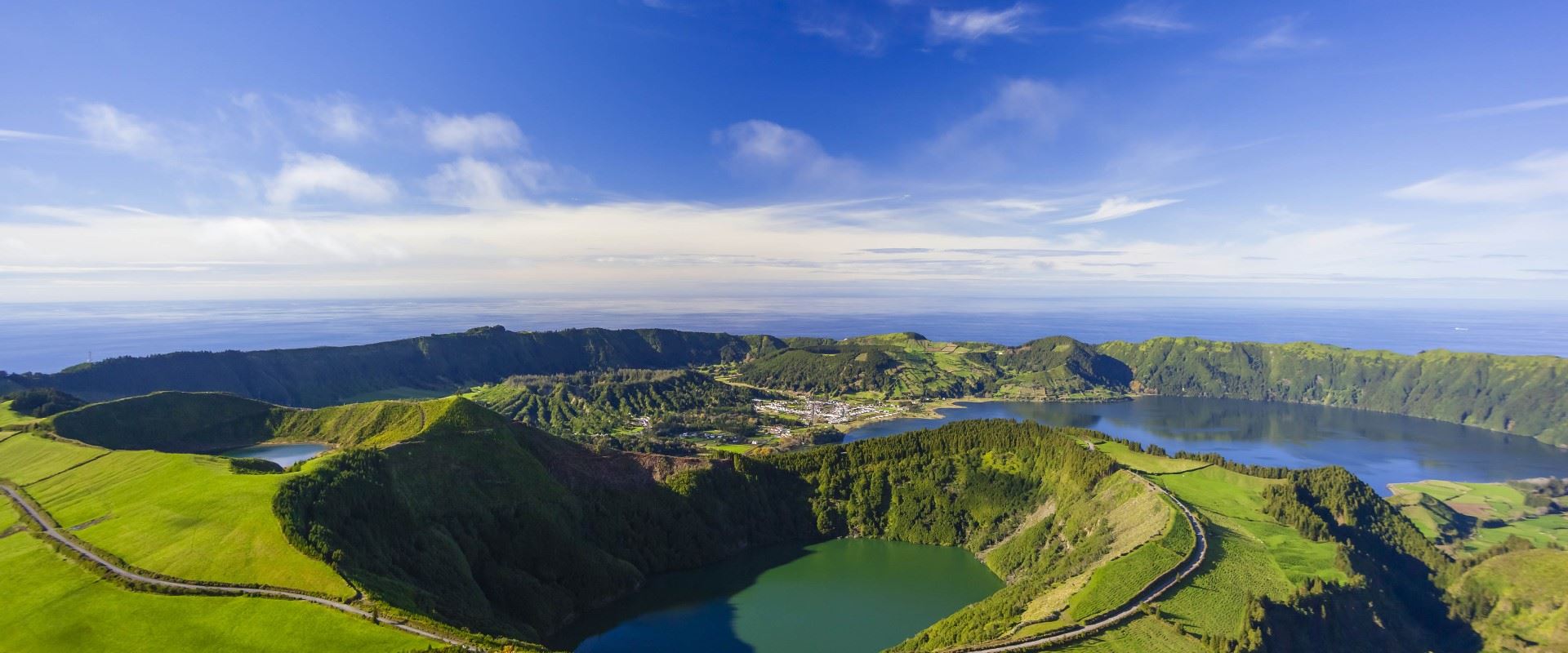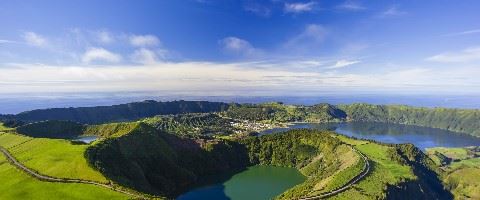1. Where are the Azores?
The Azores archipelago comprises of nine unique Portuguese islands located in the mid-Atlantic between Portugal (932 miles) and North America (2,423 miles).
2. When is the best time to travel to the Azores?
Ideally the answer would depend on what your interests are, but in general the peak time would be between April and October when the weather is at its most settled. The Azores is particularly beautiful in the Spring (Apr-Jun) when the archipelago erupts into vibrant colours with the bloom of hydrangeas, agapanthus and ginger lily.
Enjoy beautiful nativity scenes in Ponta Delgada, plus classic choral concerts and celebrations throughout many towns and villages across the island for Christmas. On New Year’s Eve, see communities welcome in the new year together with street parties, live music, drinking, dancing and, of course, fireworks. The festivities also expand into the hotels, with many offering gala dinners and other activities, to ensure it’s the most wonderful time of the year.
January is an excellent time to try something new and get active. São Miguel is blessed with dramatic volcanic scenery – giant crater lakes and hissing hot springs – so it is an ideal destination for increasing your daily step count. Many of the islands’ hiking trails pass around, or even through, some of the once-active volcanoes, which have made this fertile landscape what it is today. Walking Inside Volcanoes is a flexible self-guided trip, offering the chance to see the best of São Miguel – from the steaming holes (fumaroles) where traditional ‘Cozido’ is cooked (a stew with multiple meats, plus potatoes and vegetables, that’s all cooked underground by heat from the volcanic steam vents in Furnas) to the stunning lakes formed in volcanic craters.
3. Is there a direct flight from the UK?
See details for flights here
4. Which island(s) would you recommend for my first trip to the archipelago?
We would recommend the island of Sao Miguel as an ideal island for an introduction to the Azores. There is plenty to see and do during a week long stay. Take a drive to see a fabulous volcanic crater lake; visit a pineapple factory and tea plantation; bathe in a thermal hot pool in Furnas' botanical park; swim with dolphins; play a round of golf – the list goes on. For a multi-centre holiday the islands of Sao Miguel, Faial and Terceira are popular combinations for first time visitors.
5. Which island(s) are particularly good for walking?
All the islands are good for walking but some of the most scenic walks can be found on Sao Miguel, Terceira, Sao Jorge, Pico, Flores and Santa Maria.
6. What wildlife am I likely to see in the Azores?
24 of the planet's 80 species of whales and dolphins have been sighted off the coast of the Azores. During the summer months (Jul-Aug) migratory species including pods of baleen whales, pilot and beaked whales, Atlantic-spotted dolphins, striped dolphins and turtles pass the islands. Whereas, in winter and spring (Oct-Jun), species of baleen whales such as fin whales, sei whales and blue whales are likely to be seen.
7. Can I travel between the islands by boat?
Travel between the islands by boat is possible but not always recommended as the distance between most of the islands would mean that the majority of your day is spent travelling. The exception would be the central group of islands, Faial, Pico and Sao Jorge which, due to their close proximity, are only a short ferry crossing from one other (between 30-90 minutes). For connections between other islands we would recommend inter-island flights.
8. What is the weather like in the Azores?
The Azores has a mild climate year round (15 degrees in the winter and reaching 25C degrees in the height of summer) making it the perfect destination for outdoor activities such as walking, whale watching, kayaking and jeep tours.
9. What are some of the highlights of the Azores?
Sea activities such as whale and dolphin watching excursions and swimming with dolphins; guided island tours with plenty of photo stop opportunities; colourful festivals including the Festas do Senhor Santo Cristo dos Milagres (Christ of Miracles) – the second largest religious festival in Portugal which takes place in Ponta Delgada on the fifth Sunday after Easter; bathing in a thermal pool; walking through the botanical gardens of Furnas; visiting the UNESCO World Heritage Site of Angra do Heroismo (Terceira); ordering a gin and tonic at Peter's Cafe (Faial) – a must for any visitor to the island; and a climb up Mount Pico, the highest point (2,351km) in Portugal.
10. Is it expensive to eat out?
The cost of living in the Azores is extremely reasonable. A coffee is about 60p; a draft beer from 90p and a two-course dinner including drinks approximately £32.00.










